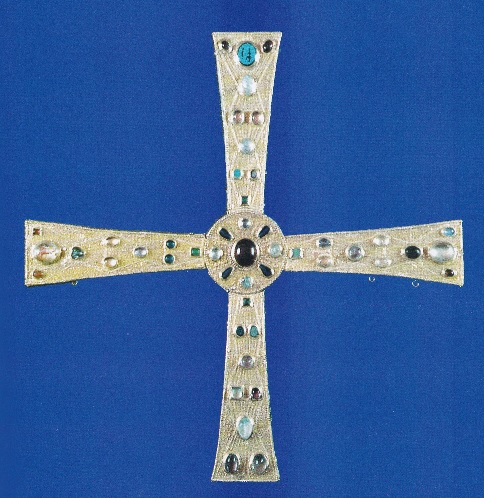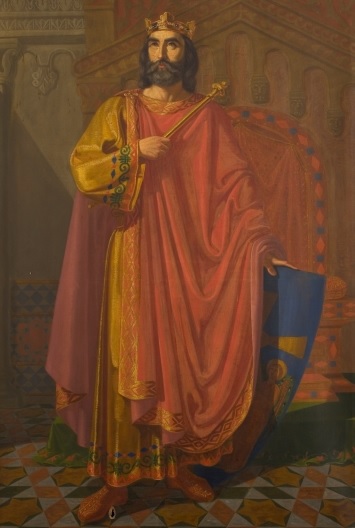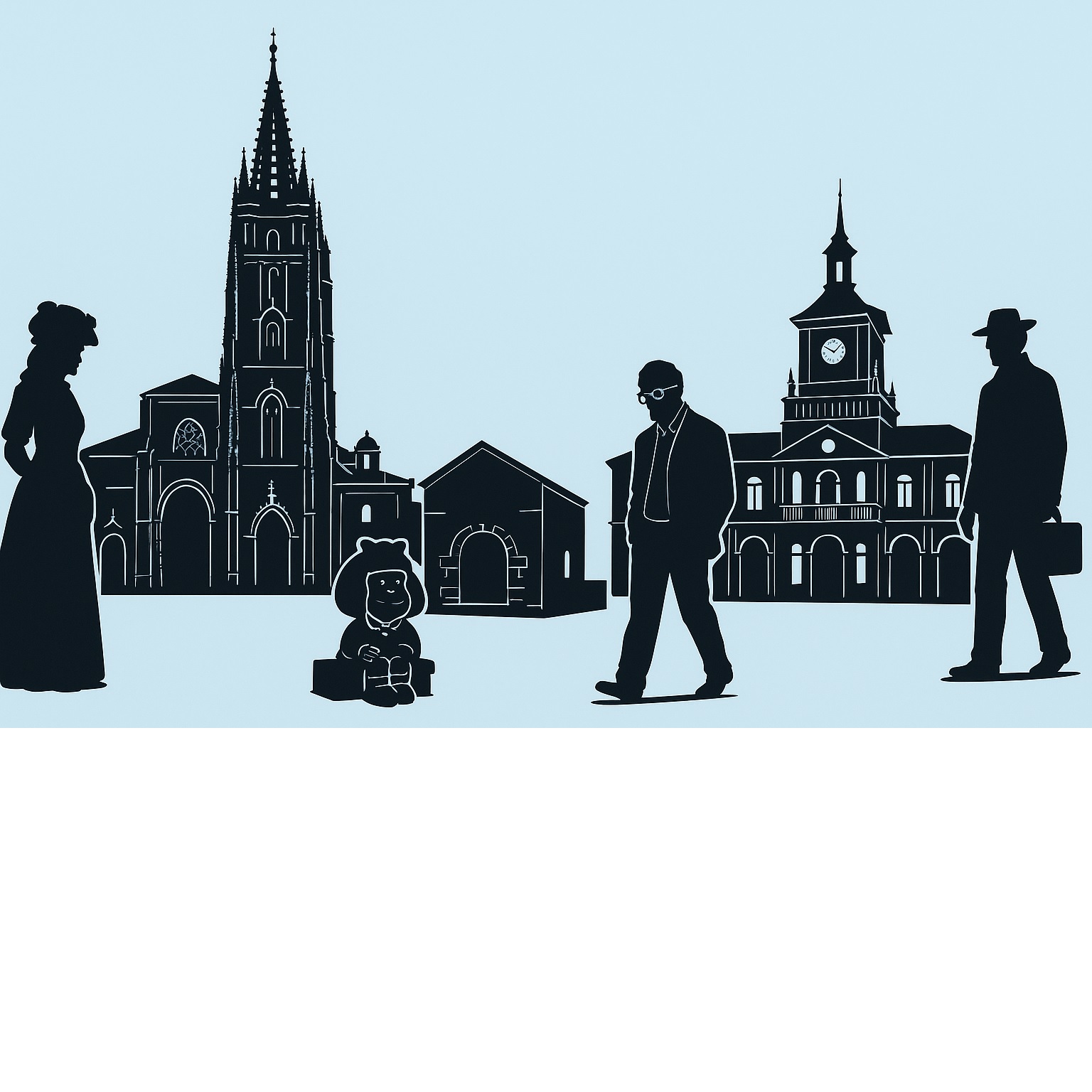History
The Cross of the Angels, dated to 808 AD, was made with a cherry wood core covered in gold, precious stones and Roman cameos donated by King Alfonso II. Its design follows the Franco-Lombard style, typical of early medieval European art. On its reverse is a Latin inscription reflecting the monarch's devotion and serving as a protective formula against theft or desecration.
"I receive with pleasure, may this remain in honor of God which Alfonso, humble servant of Christ, offers. Whoever dares to remove me from where my free will has donated me, may they be struck by divine lightning."
This inscription reveals the sacred and protective nature of the cross, functioning as a true medieval spell against plunder.

Detail of the Cross of the Angels showing its elaborate decoration
According to legend, the cross was commissioned by Alfonso II to two mysterious goldsmiths who disappeared after delivering it, leaving behind a miraculous light. Historically, its manufacture is attributed to workshops linked to the king. One hypothesis suggests that the 'angels' might have been Angles (Germanic goldsmiths), confused in oral and written tradition.

Alfonso II the Chaste, monarch who commissioned the Cross of the Angels
Beyond being a political and spiritual symbol, the Cross of the Angels was used as a reliquary, containing sacred objects. This increased its liturgical importance and reinforced its function as a protective symbol of the kingdom.
Legend of its creation by angels
The legend tells that after mass, Alfonso II was approached by two pilgrims who offered to make the cross. When he returned later, they had disappeared and the cross was shining miraculously. It was interpreted that they were angels sent by God, which gave the cross its name and reinforced its divine nature.
Confusion between "angels" and "Angles"
Some interpretations consider that the "angels" of the legend were actually Angles, goldsmiths from Northern Europe. This confusion is reflected in other legends, like that of Pope Gregory I, who upon seeing Angle slaves said they looked like "angels", contributing to the name of England (Anglaterrae).



